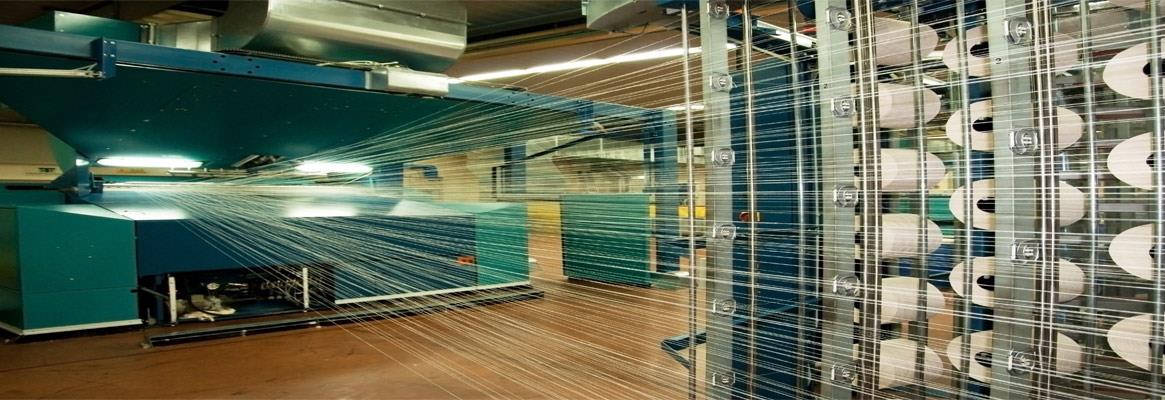Increasing innovations, strong domestic consumption and a healthy export demand make the prospects for the Indian textiles industry look promising, writes C Kamatchisundaram.
One of the oldest in India, the textiles industry is a major contributor to the country's exports. The industry is responsible for the huge employment of skilled and unskilled labour. It currently accounts for approximately 2 per cent of India's gross domestic product (GDP), about 10 per cent of manufacturing production, and 14 per cent of the overall index of industrial production (IIP).
The recent policy changes on demonetisation in November 2016 and the introduction of goods and services tax (GST) in July 2017 created a disruption in the entire country's economy. This highly fragmented industry, which predominantly runs on the cash and produces products for mass consumption, suffered a huge setback due to the revised tax regime.
Despite the disruptions, the Indian textiles industry is expected to grow from $120 billion to $250 billion in the next five years, representing the industry's high potential in all sectors involved. India has become a leading supplier in the global yarn trade. In order to sustain and improve this leadership and to meet the needs of high quality yarn in the domestic market, the investments in spinning machinery have to be accelerated. Similarly, the investments in post-spinning sectors like fabric forming and processing and finishing should also accelerate to meet the stringent needs of the export market and the ever-increasing needs on quality apparel from the domestic market.
Thus, the Indian government and the state governments are promoting investments offering capital, interest and other subsidies. Further, the Indian government may also come up with free trade agreements with key consuming countries to enable better access to the market. It has already allowed 100 per cent FDI in the Indian textiles sector under the automatic route. Accordingly, it is now expected that a good balance will be maintained between new capacity creation and modernisation.
The role of e-commerce
E-commerce has been playing a major role in the textiles and apparel industry. It provides customers a convenient way to connect with each other, and for businesses to engage and trade. The present era is such that e-commerce dominates the market and every company which aims to grow almost always has an online presence. However, when it comes to purchasing machinery, customers still prefer to have personal interactions in various areas like technological capabilities, features, etc.
It is important for textile businesses today to adopt the most advanced tools that are available in the market. However, when it comes to the trade of heavy textile machinery, most business transactions take place over personal interactions since it involves millions of rupees.
Yet, there are players in the Indian textiles industry working towards moving these trades online through an e-technology for the purchase of parts and accessories. For example, Lakshmi Machine Works Ltd, the global leader in spinning machinery was one of the first to introduce this concept through a tool called "e- spares". The entire process-right from quote creation to order placement to making payments-is now online. This has not only reduced the turnaround time for order placement and fulfillment but also improved the overall purchase experience.
Industry 4.0
Once considered limited only to handicrafts, textiles have now become a highly urbane, scientific and engineering activity of new types of fibers and technologies. This sector now encompasses engineering in the fields of mechanical, electrical, computer, chemical, electronic and more. With changing trends and growing consumer demands, technology has been reshaping the textiles industry to meet these demands and trends.
A wave of innovation that has hit the textiles industry is the coming of industry 4.0-automation and introduction of artificial intelligence in the textile machinery sector. These advances allow companies to remote monitor and control their machinery as well as in data collection and analytics to work towards further improvement. Such innovations have allowed companies to gauge production details of the machinery and plant and the performance of the machinery through the pressing of a button. Any problem that occurs in the machine software can be controlled by machinery manufacturers sitting in the manufacturing plant. Companies have also started working towards viewing these developments and updates over a mobile phone.
Overall, with the increasing number of innovations and backed by both strong domestic consumption along with a healthy export demand, the future for the Indian textiles
industry looks promising. Rapid economic growth has given rise to higher disposable incomes further leading to the rise in demand for products, thereby creating a bigger domestic market.
Additionally, the influx of western fashions is causing a drastic and constant change in fashion trends in India which the textiles industry needs to cater to. Currently estimated at $85 billion, the domestic market for apparel and lifestyle products is expected to reach $160 billion by 2025.
About the author:
C Kamatchisundaram is Vice-President (Textile Machinery Division), Voltas








Comments